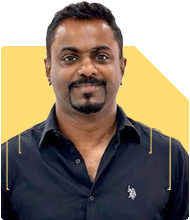Hi.......I am 45 years old.
I have house of my own, with no liability.
I have a investment horizon of 15 years, with high risk taking capacity.
I am looking for a retirement corpus of 3-4 crores.
I am making following investments in Mutual Funds:-
Please analyse the portfolio and advice accordingly.
UTI Nifty 50 Index Fund Direct Growth 12000
Tata Small Cap Fund Direct - Growth 4000
SBI Contra Direct Plan Growth 5000
Nippon India Growth Fund Direct- Growth 6000
Quant Small Cap Fund 4000
Nippon India Small Cap Fund 5000
ICICI Prudential Bluechip Fund Direct-Growth 9000
Mahindra Manulife Multi Cap Fund - Direct Plan - Growth 5000
Parag Parikh Flexi Cap Fund 5000
SBI Large & Midcap Fund Direct Plan-Growth 5000
TOTAL 60000
Ans: It's wonderful to see your proactive approach towards securing your retirement. At 45, with a clear investment horizon of 15 years and a high-risk tolerance, you're well-positioned to build a robust portfolio that can help you achieve your goal of a 3-4 crore retirement corpus. Let's delve into analyzing your current mutual fund portfolio and provide tailored advice to optimize your investments.
Commendable Initiative
Firstly, kudos on recognizing the importance of retirement planning and taking proactive steps towards building your corpus. Your commitment to investing in mutual funds demonstrates a forward-thinking approach to securing your financial future.
Analyzing Your Portfolio
Let's evaluate each component of your mutual fund portfolio to ensure alignment with your long-term financial goals:
UTI Nifty 50 Index Fund Direct Growth (12,000): While index funds offer low expense ratios and broad market exposure, they lack the potential for outperformance compared to actively managed funds. Consider diversifying into actively managed funds for potential alpha generation.
Tata Small Cap Fund Direct - Growth (4,000): Small-cap funds can be volatile but offer high growth potential over the long term. Given your high-risk tolerance and long investment horizon, maintaining exposure to small-cap stocks is prudent.
SBI Contra Direct Plan Growth (5,000): Contra funds invest in out-of-favor sectors or stocks with the potential for a turnaround. While they can offer value opportunities, ensure sufficient diversification to mitigate risks associated with contrarian investing.
Nippon India Growth Fund Direct- Growth (6,000): Growth-oriented funds focus on companies with high growth potential. Given your long-term horizon, growth funds can help maximize returns by capitalizing on compounding over time.
Quant Small Cap Fund (4,000): Small-cap funds offer exposure to high-growth potential companies, albeit with higher volatility. Monitor the fund's performance and consider rebalancing if necessary to maintain optimal risk-return balance.
Nippon India Small Cap Fund (5,000): Similar to the Tata Small Cap Fund, this investment provides exposure to the small-cap segment. Given the risk associated with small caps, ensure diversification across market caps to manage overall portfolio risk.
ICICI Prudential Bluechip Fund Direct-Growth (9,000): Bluechip funds invest in large-cap stocks with strong fundamentals and stable performance. While offering stability, ensure diversification across market segments for optimal risk management.
Mahindra Manulife Multi Cap Fund - Direct Plan - Growth (5,000): Multi-cap funds provide flexibility to invest across market capitalizations based on prevailing market conditions. They offer diversification benefits and adaptability to changing market dynamics.
Parag Parikh Flexi Cap Fund (5,000): Flexi-cap funds have the flexibility to invest across market segments based on the fund manager's discretion. They offer diversification benefits and adaptability to varying market conditions.
SBI Large & Midcap Fund Direct Plan-Growth (5,000): Large & mid-cap funds provide exposure to both large and mid-cap stocks, offering a balanced approach to growth and stability. Monitor the fund's performance relative to its benchmark and peers.
Optimizing Your Portfolio
Diversification: While your portfolio exhibits diversification across market segments, ensure adequate diversification within each category to mitigate concentration risk.
Regular Review: Conduct periodic reviews of your portfolio's performance and rebalance if necessary to maintain alignment with your investment goals and risk tolerance.
Disadvantages of Direct Funds
Direct funds require investors to independently research, select, and manage their investment portfolios, which can be time-consuming and challenging, especially for novice investors. Lack of professional guidance may lead to suboptimal investment decisions.
Benefits of Regular Funds Investing through MFD with CFP Credential
Investing through a Certified Financial Planner (CFP) credentialled Mutual Fund Distributor (MFD) offers several benefits:
Personalized Advice: A CFP-certified MFD provides tailored investment advice based on your financial goals, risk appetite, and investment horizon, ensuring your portfolio aligns with your objectives.
Diverse Fund Selection: MFDs offer access to a wide range of mutual funds across asset classes and fund categories, enabling you to build a well-diversified portfolio suited to your needs.
Final Words
By optimizing your mutual fund portfolio based on the principles of diversification, risk management, and periodic review, you can enhance the probability of achieving your retirement goal of a 3-4 crore corpus. Stay committed to your investment strategy and seek professional guidance when needed to navigate market fluctuations effectively.
Best Regards,
K. Ramalingam, MBA, CFP,
Chief Financial Planner,
www.holisticinvestment.in


























